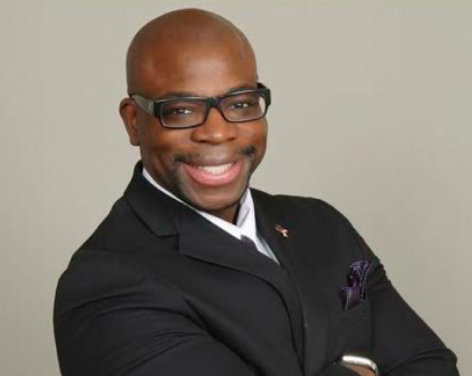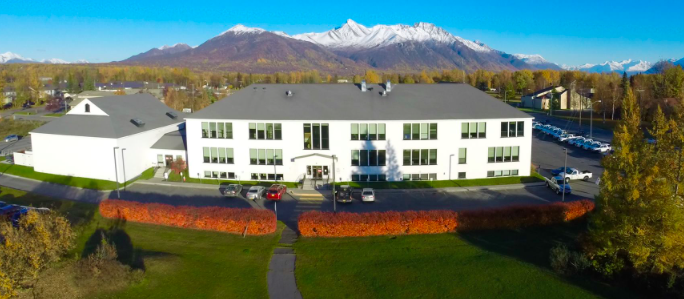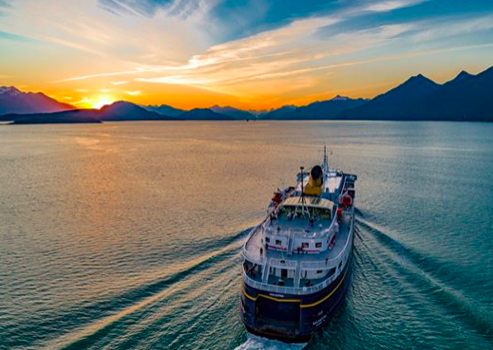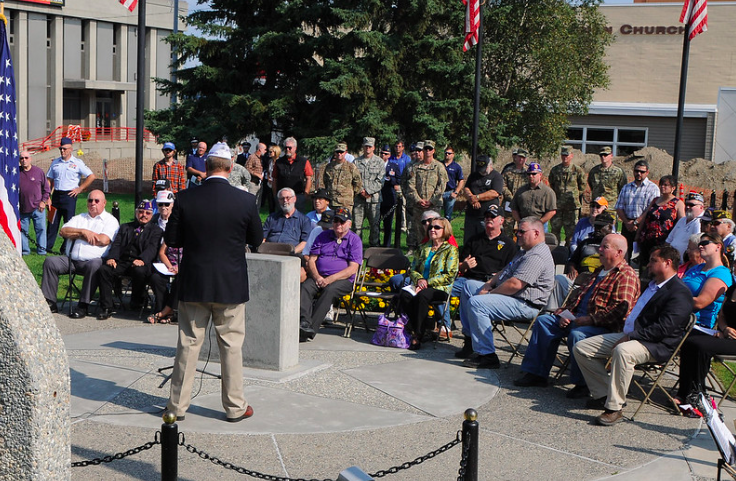ADF&G photo: Doug Vincent-Lang
By GREG BRUSH
Acting responsibly. Embracing culpability for one’s actions. Admitting mistakes of the past and making conservative, albeit sometimes unpopular decisions, moving forward. Thinking of the future and what is best for longevity for the people of Alaska. And taking the heat for what are very hard, and often contentious, choices.
If you think I’m talking about what some call our most controversial governor ever, you’re mistaken… although there is a direct correlation. Rather, I’m referring to the man appointed by Gov. Michael Dunleavy to lead the Alaska Department of Fish and Game.
A long time ADF&G manager with proven character, an approachable demeanor, and the oh-so-rare blend of a biology background (imagine that, an actual scientist in charge of our resource!) and the common-sense street smarts of someone who has “been there/done that”, the choice of Doug Vincent-Lang felt right to many from day one.
But some of his decisions have rocked the boat a bit lately.
You see, responsible fishery management can be as contentious as fiscal responsibility. This is because both are absolutely necessary to continue to prosper…but also painful in the short term when they directly impact you or me.
It’s not easy and it is the rare and special man who can make the tough choices, taking the criticism while remaining steadfast in his decisions.
Doug Vincent-Lang is that man.
As recently as late July, he proved his mettle and his resolve to all Alaskans.
When a surprisingly banner return of late run Kenai River sockeye continued to build, Commissioner Vincent-Lang and his biologists monitored the extensive data, both past and present, and weighed their options regarding the conundrum before them.
On one hand, the “red” salmon were there for the taking for all users including sport, guided sport, personal use and the Upper Cook Inlet commercial fleet.
The quandary however, as it has been for decades, was how to maximize opportunity on that which was abundant (sockeye) while conserving that which is special, genetically-unique, and far less abundant, namely late run Kenai River king salmon.
Unless you’ve been living under a rock, you likely know that our Kenai River king resource isn’t anything near what it used to be, in both numbers or size. The hurdles these giant salmon have had to face are many and the blame game of who did what, and who gets what, and what to do about the problem, is at a historic high.
Some sport anglers choose not to even target kings in the Kenai any more; some advocate for catch and release through forums like Fish For The Future; and some dig their heals in, harvesting “full throttle” every king they can get their hook into, while pointing their finger at the other user group, Commercial Fishermen.
Sadly, it’s always been this way.
Meanwhile, Vincent-Lang and his team of managers reviewed the data, consulted the complex management plan, and debated—often quite heatedly behind close doors—the options before them.
Liberalize the commercial fleet with maximum yield of sockeye as the sole objective due to the dubious “sky is falling” concept of over-escapement or restrict the net fishery to allow the necessary passage of Kenai kings to reach their natal spawning grounds. Allow more time for the UCI drift fleet or consider the deep impact it has on the struggling little rivers up north? Grant the use of bait for sport king salmon anglers or continue to hand-cuff their success rate with single hook, artificial lures only.
A small but vocal minority of short-sided anglers and guides screamed, “We want bait!” because the sonar chronicled a few decent days where 300-500 passed the sonar. Indeed it appeared that late run Kings were momentarily on track to hit the bottom end, ie the bare minimum, of the escapement goal. Some asked, is the minimum enough?
Meanwhile, the drift fleet wanted more hours to fish the central corridor of Cook Inlet. And some set netters pushed their “sky is falling” golden ticket mantra of over-escapement, whereas they claimed that “too many fish in the river will destroy the run” down the road.
Some people wanted to take, take, take… tossing sustainability aside.
But what those extremists forgot to consider is that Fish and Game is constitutionally charged with ensuring sustainability. Those yelling loudest also don’t realize that our “new and improved” escapement goals are now ranges, with clear lower and upper numbers instead of a fixed-point target figure. The lay person can visualize these escapement goals as two goal posts…whereas the kicker should prudently aim for the middle to give himself as much margin for error as possible.
And that’s what our commissioner tried to do. He put the resource first.
For far too long, managers have aimed left and aimed right, often bouncing the ball off the upright or missing the goal completely. Doug Vincent-Lang, realizing that barely hitting the low end of the KR king salmon escapement goal year after year after year will have catastrophic consequences later, heeded the advise of his staff who warned that heavy UCI commercial fishing could disastrously affect the returns of struggling salmon runs up north.
Knowing that bait in the Kenai increases mortality, and feeling the heat from the people of Alaska that were fed up with unsuccessful dipnetting trips and slow rod and reel success rates of years past, and believing that a season of good Kenai River late run sockeye numbers could help offset last years shockingly diminutive numbers… he did the unthinkable.
He remained conservative and opted to allow the people of Alaska to put some fish on their tables and in their freezers, but more importantly, he attempted to give the future of our fisheries, as well as the future of our fishermen (both sport and commercial) a fighting chance down the road. Ultimately, he attempted to err on the side of caution; on the side of the fish.
No bait for the sport angler, less than the maximum time for the East Side set net fishery, and a few extra salmon for the people of Alaska in the form of the first liberalized sport fish limit for late run sockeye in years.
And that is why he and the department that he leads got sued.
Upset about ADF&Gs attempt to protect a struggling run of Kenai River king salmon, Cook Inlet commercial fishermen recently went to court to order the ADF&G to let them kill more fish.
Among their legal arguments in an emotionally charged 15-page memorandum asking for an injunction against Vincent-Lang and his state agency is the claim that the national interest is threatened if fishermen gillnetting Upper Cook Inlet don’t catch as many fish as possible.
I’ll just leave that right there. Think about it; let it perk a bit. But don’t forget two very important factoids as you form your opinion.
First, consider that statewide, commercial fishermen are allocated 98 percent of the fish harvested in Alaska. Second, don’t forget that Vincent-Lang and ADF&G held back commercial as well as sport fishers in July, attempting the noble, contentious and precarious juggling act that emphasized the importance of the late run King Salmon resource.
But don’t be confused as you digest this info: It is the Board of Fish that makes allocative decisions. The Department only implements them.
Now that August has rolled around, the gloves are off as Vincent-Lang only has X number of tools to use since “paired restrictions” whereas all users are intended to share the burden of conservation, basically go out the window.
In lay terms, that means sport king fishing on the Kenai is closed to conserve those all important Chinook arriving late to the party, but Cook Inlet netters can have at ‘em.
If it sounds like I’m taking sides here, you’re right. I am on the side of the fish, as is Vincent-Lang.
Of late, management is the most in favor of the “resource first” it has ever been and I believe that is what is in Doug’s mind, heart, and his actions.
It would be very sad if he doesn’t get some recognition for all the heat he has taken to further that belief and philosophy. And it would be a true tragedy if the people of Alaska didn’t band together at the next Board of Fish hearing to make the necessary changes to give Vincent-Lang and the department the tools needed to continue to put the fish first!
Indeed there is a new sheriff in town, and his name is Doug Vincent-Lang. Now let’s support him.
AUTHORS NOTE: before some irate readers heatedly google my name to find out my background, allow me to come clean. I’m a long time resident of Alaska, a sport fisherman and a small business owner who makes his living off our resources. But more importantly, I’m family man and a conservationist. I’ll take my lumps with no bait for Kings. I’ll fish total ‘catch and release’ on these big, wild salmon. I’ll quit fishing Kenai River king salmon entirely if need be. And I’ll endure the hardship that was a reduced sockeye bag limit and a total sport fishing closure last year at this time. Because first and foremost, I want fish for the future.
Like my neighbor and brother, the commercial fisherman who also desires to scratch out a living off our precious resource, my small business has taken some hits over the years. So I’ve adjusted my business model by not marketing Kenai River king charters, demanding a policy of strict C&R if/when we do target big, wild chinook and totally focusing our harvest on species of abundance, such as sockeye salmon.
Because, as I said, first and foremost, I want fish for the future more than anything; for me, my kids, my fellow Alaskans—whether they be sport, commercial or p/u users—and for visitors to what truly is, The Greatland.
~ Greg Brush, EZ Limit Guide Service









